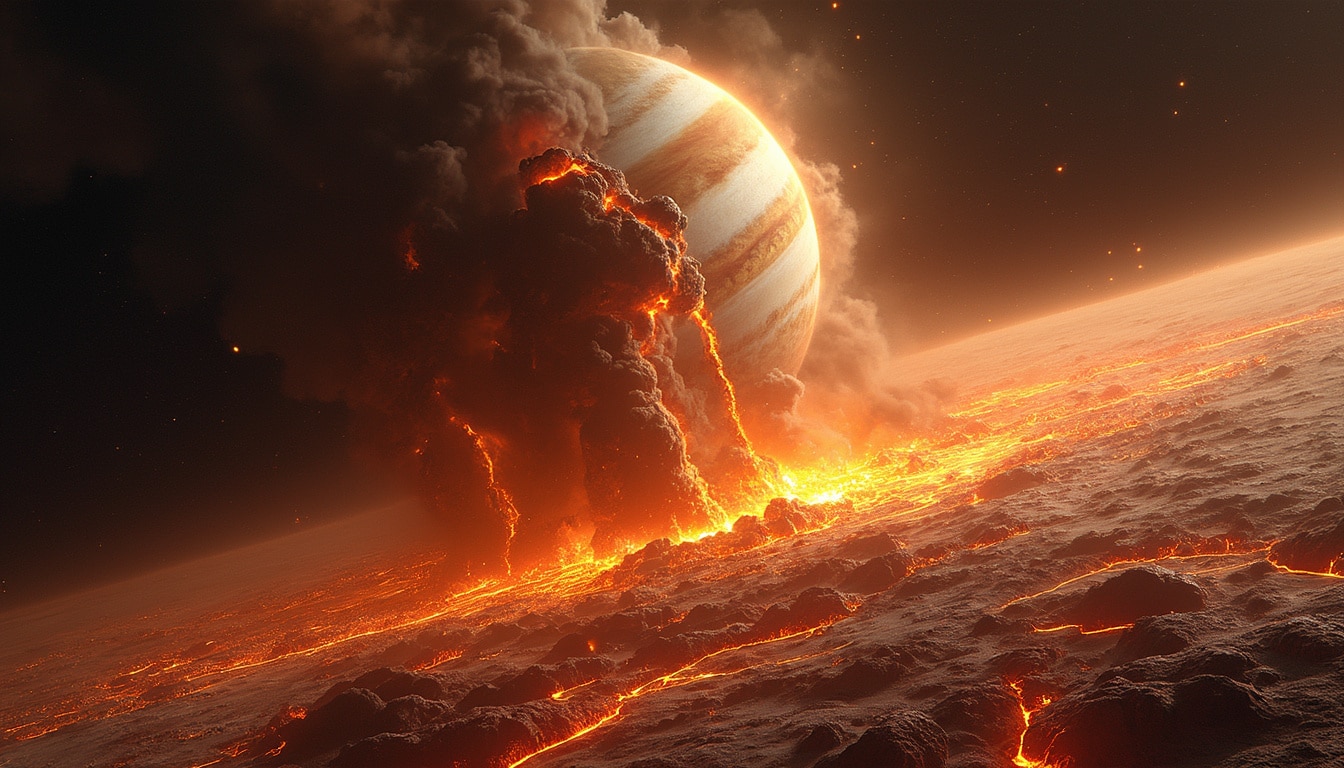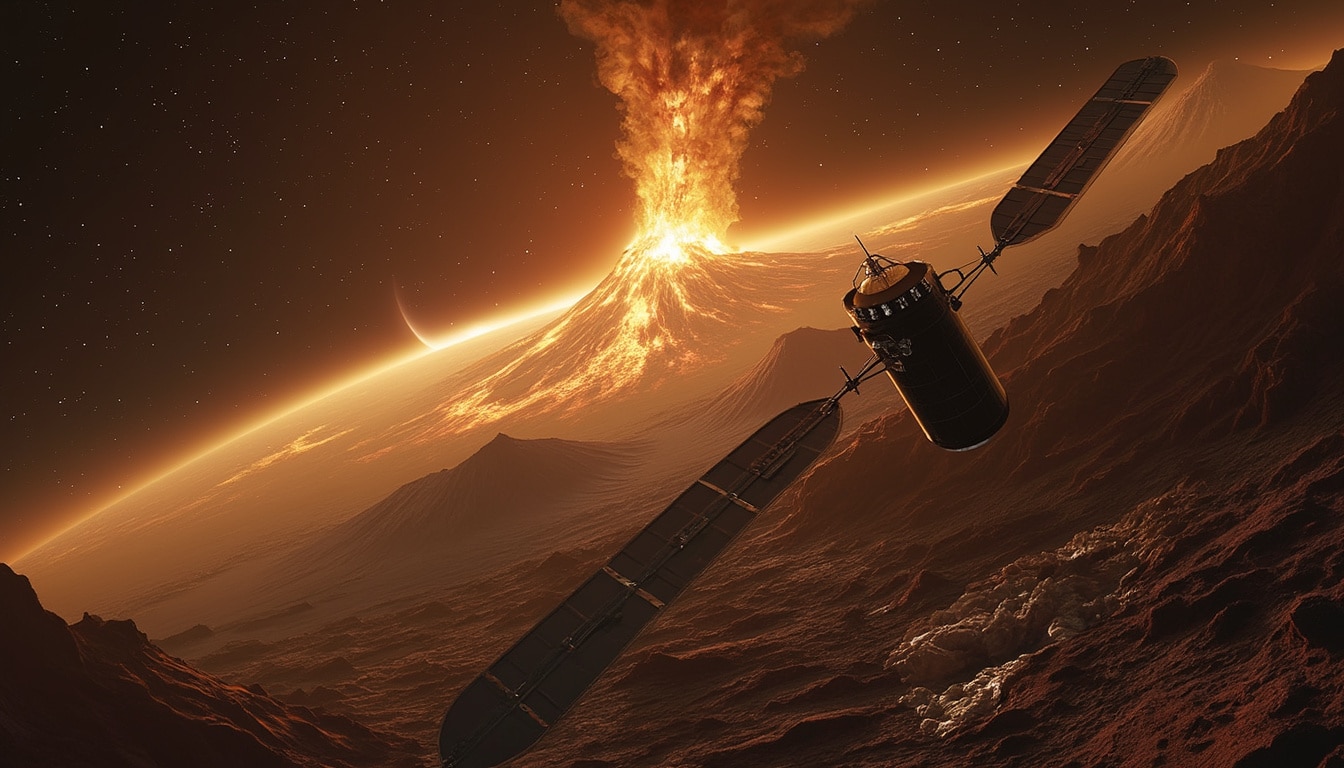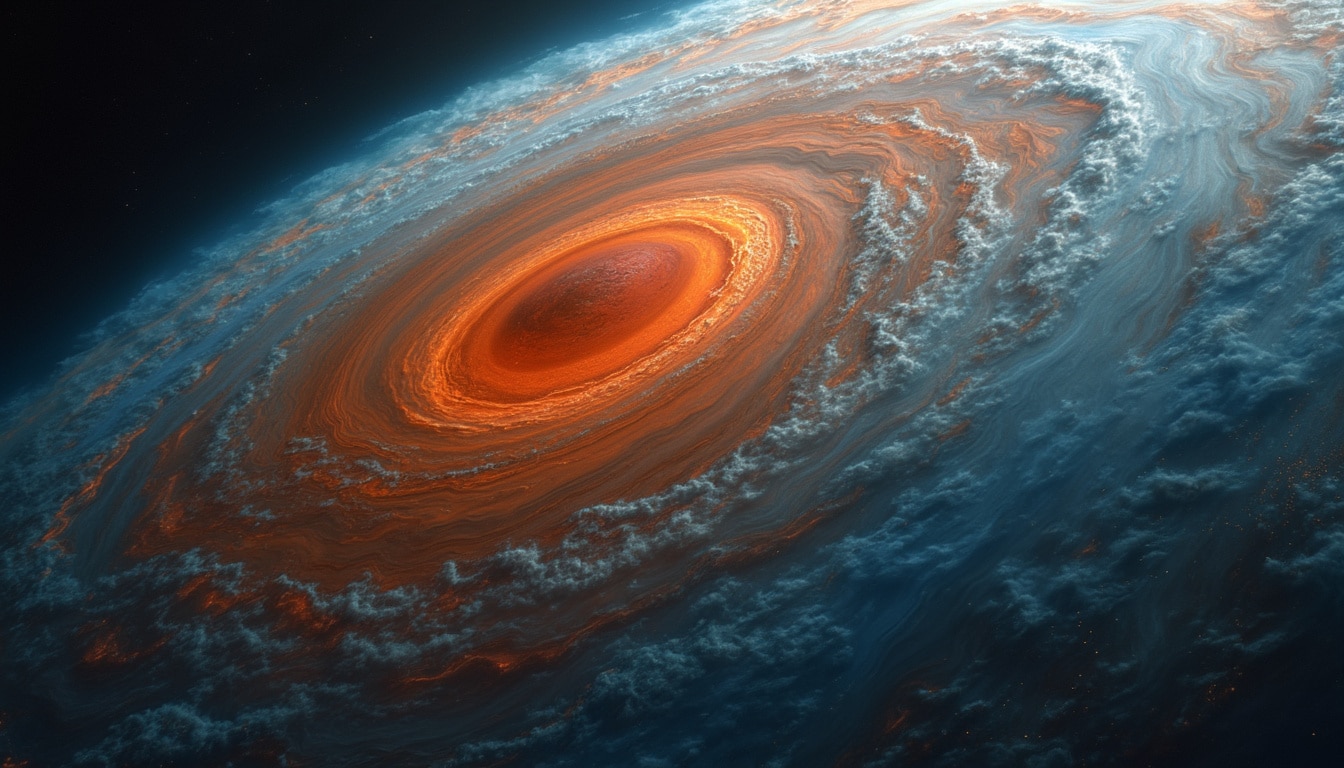The recent discoveries made by NASA’s Juno spacecraft have unveiled dramatic volcanic activity on Io, one of Jupiter’s most fascinating moons. This research has not only expanded our understanding of Io but also provided exciting insights into the dynamics of volcanic activity on a celestial body like no other in our solar system. Spectacular images and data collected from this mission reveal a unique narrative of geological activity, fueled by tidal forces and the massive gravitational pull of Jupiter, providing a window into the turbulent processes that shape this extraordinary moon.
Exploring the Volcanic World of Io
Io stands out among Jupiter’s moons, boasting over 400 active volcanoes. Its landscape is one of extremes, where molten lava interacts dynamically with the icy crust. In December 2024, during a close flyby, Juno identified an enormous volcanic eruption that marked a significant milestone in our understanding of extraterrestrial geothermal activity. This event not only shattered previous records for volcanic activity on Io but also intensified interest in the moon’s geological characteristics.

The Most Intense Eruption Yet
During the Juno spacecraft’s 57th close approach to Jupiter, scientists observed a massive thermal anomaly near Io’s south pole. This area covered approximately 40,000 square miles, eclipsing the previous record held by the famous Loki Patera lava lake, which spans around 7,700 square miles. The JIRAM instrument onboard Juno detected these incredible heat emissions, confirming this event as the most significant volcanic explosion ever recorded on Io. The Juno team, led by project scientist Scott Bolton, expressed their excitement over capturing such unprecedented data.
Volcanism Driven by Tidal Forces
The extreme volcanic activity on Io is primarily influenced by the immense tidal forces from Jupiter’s gravitational pull, alongside the interactions with its neighboring moons, Europa and Ganymede. This gravitational tug-of-war leads to strong internal heating, which is a key factor in driving Io’s volcanic eruptions. Scientists continue to study how these forces result in the creation of new geological features and affect the moon’s overall composition.
The Future of Io Research
NASA’s commitment to studying Io remains steadfast. Upcoming missions and collaborations aim to gather further data on this volcanic moon, focusing on the intricacies of its surface and internal structure. The continual monitoring and exploration will enhance our knowledge of how volcanoes operate outside our planet and their implications for understanding planetary systems.

Scientific Importance of Io’s Volcanism
Understanding the volcanic activity on Io not only contributes to our knowledge of this particular moon but also has broader implications for comparative planetology. By studying the processes that govern volcanic eruptions on Io, scientists can draw parallels with volcanic activity on Earth and other celestial bodies. This research helps to identify commonalities and differences in planetary dynamics, furthering our grasp of the forces at play within the solar system.
The Role of Juno in Modern Astronomy
Launched in 2011, NASA’s Juno spacecraft has transformed our understanding of Jupiter and its systems. Juno’s suite of sophisticated instruments allows it to investigate the gas giant’s atmosphere, magnetic field, and the unique characteristics of its moons like Io. These efforts have uncovered mysteries about Jupiter’s interior structure and magnetic environment, including insights into the influence turbulent atmospheres have on shielding and engaging with surrounding celestial bodies.

Unraveling Jupiter’s Secrets
The Juno mission has provided unparalleled close-up data of Jupiter, leading scientists to discover that the planet may have a core that is partially dissolved. Such findings influence our understanding of planetary formation and evolution. Furthermore, by investigating environmental factors around Io, Juno is helping scientists to map out how interplanetary interactions occur in the context of a massive planet’s influence.
Impacts of Findings on Future Missions
The discoveries made by Juno have profound implications for future space exploration missions. The mission has highlighted the need for closer investigations into the unique features of celestial bodies like Io, emphasizing the potential for groundbreaking new findings. Future missions, possibly equipped with landers and advanced spectrometers, could aim to explore Io’s surface and gather soil samples, shedding light on its geology and geochemistry.

Interplanetary Collaboration and Research
International cooperation is expected to play a significant role in future endeavors to Io. Collaborative efforts will ensure pooling of expertise and resources, leading to more sophisticated spacecraft capable of delving deeper into the complexities of this fascinating moon. By working together, scientists around the world can expand the horizons of our knowledge about volcanic worlds and their place in the solar system.




Leave a Reply